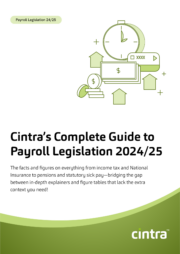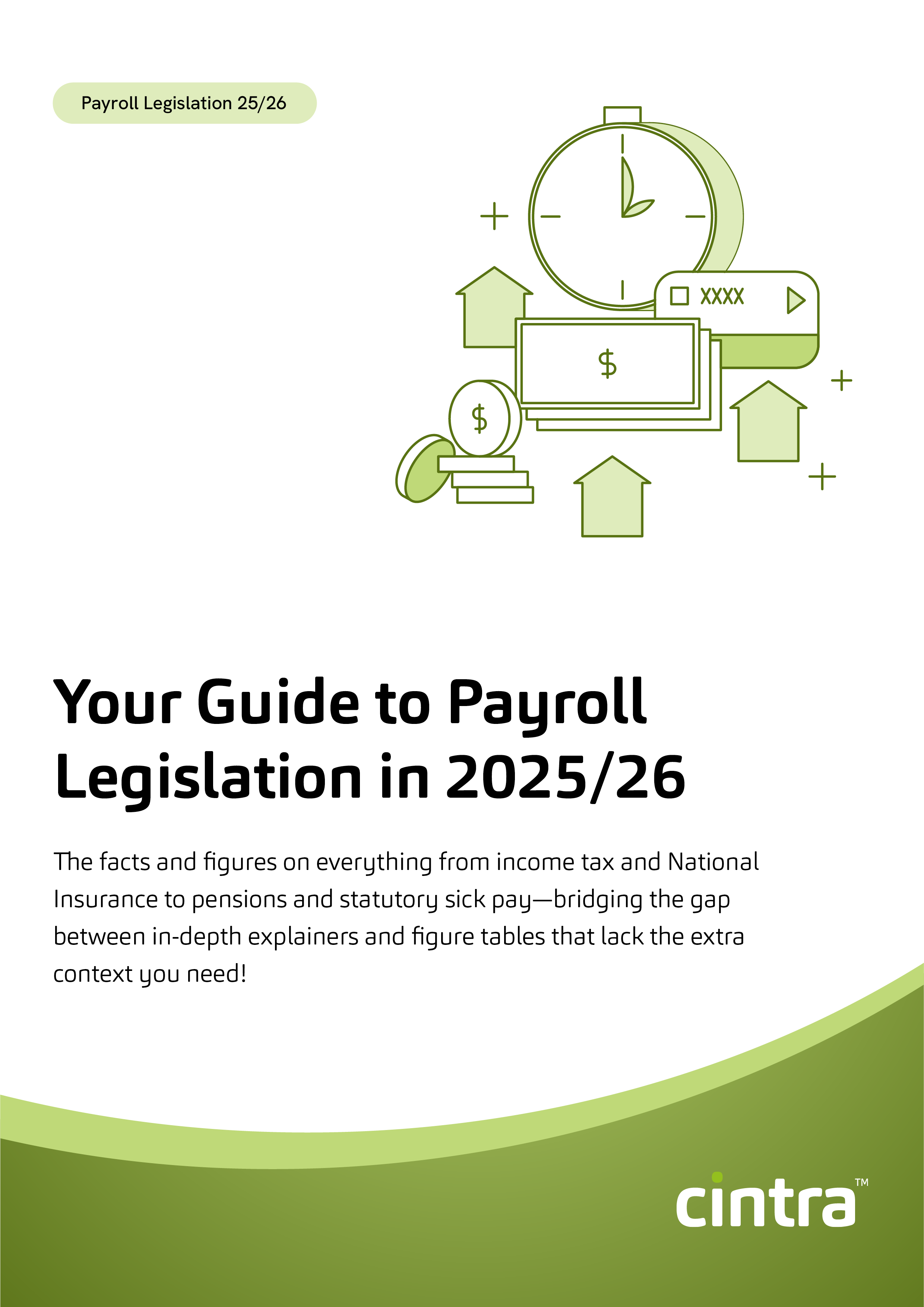“If payroll goes well, you don’t hear a thing. But the moment you make a mistake, all hell breaks loose.” Anita Lettink, Cintra Conference 2024.
Payroll is more than just numbers on a payslip. It’s a vital part of employee satisfaction and company efficiency. And as work evolves, payroll professionals face new challenges and opportunities that have the potential to reshape the future of payroll.
But there’s good news too. New tech is making things easier and understanding what’s coming next can help you stay ahead.
Let’s look at the insights that Anita delivered, covering the importance of understanding your employees and the five biggest payroll changes today.
Are you ready for the future of payroll?
Your employees want flexibility
Workplaces are evolving. People now want more than just a job; they want flexibility and transparency. Many employees, especially younger ones, are keen on work-life balance and clear salary structures. They’re not only looking for a paycheque but also for meaningful rewards and recognitions.
You need to understand these expectations to attract and retain talent. Flexibility in work schedules and transparency in communication are becoming non-negotiable.
Once you know what your employees want, you can start meeting their needs. It all starts with payroll and how you adjust your strategies to align with the latest payroll trends.
The 5 key payroll changes in 2024
Cloud technology
Cloud technology is revolutionising payroll and has become the standard in modern business practices. It enables effortless data entry and real-time access to information. By adopting cloud-based solutions, you can streamline your payroll processes and reduce errors.
Despite its advantages, many legacy systems are still using outdated on-premise solutions. Cloud technology offers the flexibility to access payroll data from anywhere and facilitates easier collaboration with remote teams. It keeps your payroll system up-to-date and secure.
Implementing cloud technology might seem like a big shift from your on-premise software, but the benefits far outweigh the initial setup efforts.
Real-time payroll processing
Gone are the days when employees had to wait until payday to access their wages. Real-time payroll processing allows them to receive part of their earnings as they work.
This trend caters to employees’ need for financial flexibility. It also boosts morale by providing instant access to funds. Businesses adopting real-time payroll can see increased employee satisfaction.
To implement this, you need robust systems that can handle continuous calculations and guarantee accuracy. Sounds all well and good but how does it actually work?
First let’s look at how most HR and Payroll providers currently process payroll:
1 -> 15 -> 28 -> 31 (This is the most common monthly payroll calendar)
At the start of the month there’s data entry for about two weeks. Then around the 15th all the calculations are applied (such as deductions and bonuses). Then around the 27th / 28th employees start getting paid. This is followed by some reporting and by the 31st, payroll is reopened.
And this is the future of payroll:
1 -> 27 ->28 -> 31
Data entry can now be done between the 1st and the 27th (because there’s a continuous calculation engine in the background). This means the moment that you enter your data, the engine automatically makes its calculations.
This in turn means that regardless of the date within any given month, your employees’ salaries are accessible and accurate.
This new way of processing payroll is definitely a win-win: employees have early access to their funds (if needed) and there’s less pressure on the payroller throughout the month.
API integration
API (or Application Programming Interfaces) integrations in payroll streamline processes and enhance efficiency by allowing different systems to communicate and share data effortlessly. This connectivity helps meet employee expectations for instant access to information and services.
One significant application of APIs in payroll is earned wage access. This service allows your employees to request a portion of their earned wages before payday. For instance, if an employee faces an unexpected expense, like a fridge breakdown, they can use an app to send a request to the payroll system. The request will ask how much they’ve earned so far and how much they can withdraw. The payroll system quickly responds with the available amount, enabling employees to manage their finances better without waiting for their regular paycheck.
Another example is the mortgage application process. Typically, applying for a mortgage (in many European countries) involves a lengthy procedure where an employee needs to get a form filled out by their employer, which can take weeks. With an API integration, employees could grant their mortgage provider direct access to their payroll information for verification. The provider could then check eligibility instantly, significantly reducing the time and effort required from payroll professionals and expediting the mortgage approval process.
API integrations in payroll not only enhance employee satisfaction by providing timely access to funds and information but also alleviate administrative burdens on payroll professionals.
Get the latest insights and best practice guides, direct to your inbox.
Compliance with new legislation
New legislation is emerging as a significant payroll trend, particularly as countries around the world implement laws focused on pay transparency and equal pay. The European Pay Transparency Directive exemplifies this shift, emphasising the need for organisations to disclose salary information before hiring. This is intended to promote fairness and equity in compensation.
As more than 70 countries head to the polls in 2024, some may adopt similar policies, impacting how payroll is managed globally. Companies will need to adjust their payroll processes to comply with these new regulations. They will have to report on gender pay disparities and make sure that the gap remains below a specified threshold (typically 5%). Failure to comply can lead to penalties, which adds a layer of urgency for organisations to reevaluate their pay practices.
This focus on legislation is prompting businesses to prioritise transparency in their payroll systems and adopt strategies that not only provide compliance but also foster a more equitable workplace.
As a result, payroll departments will play a crucial role in navigating these changes, highlighting the importance of aligning payroll practices with evolving legal requirements.
Automation and AI
Automation and AI are transforming payroll by enhancing efficiency, accuracy, and strategic potential. Generative AI, which has become widely adopted in the UK, is particularly impactful in back-office operations.
Here are some key examples of how automation and AI are shaping the future of payroll:
- Data loading and validation: AI-powered systems can automatically scan forms, check entries for accuracy, and suggest corrections. This reduces manual errors and speeds up data processing.
- Anomaly detection: AI can continuously monitor payroll data and flag discrepancies, such as missing benefits for new hires that are typically provided to others in the same role. This helps keep payroll details accurate and compliant.
- Compliance monitoring: AI helps maintain compliance by tracking regulations and automatically updating systems to reflect changes, reducing the risk of legal issues.
- Productivity boost: generative AI tools assist with tasks like title creation or generating content, which can save time and allow employees to focus on more strategic work.
This payroll trend is all about working smarter, not harder!
Are you prepared for the future of payroll?
The future of payroll is full of opportunities, but it requires preparation. By understanding these trends and adapting your strategies, you can maintain a competitive edge.
If you want to learn more about how you can stay ahead of the game, watch Anita Lettink’s keynote speech.

Payroll Legislation Guide
The facts, figures, thresholds and allowances for 2024/25 spanning tax, National Insurance, pensions, statutory payments and more.
Download now


